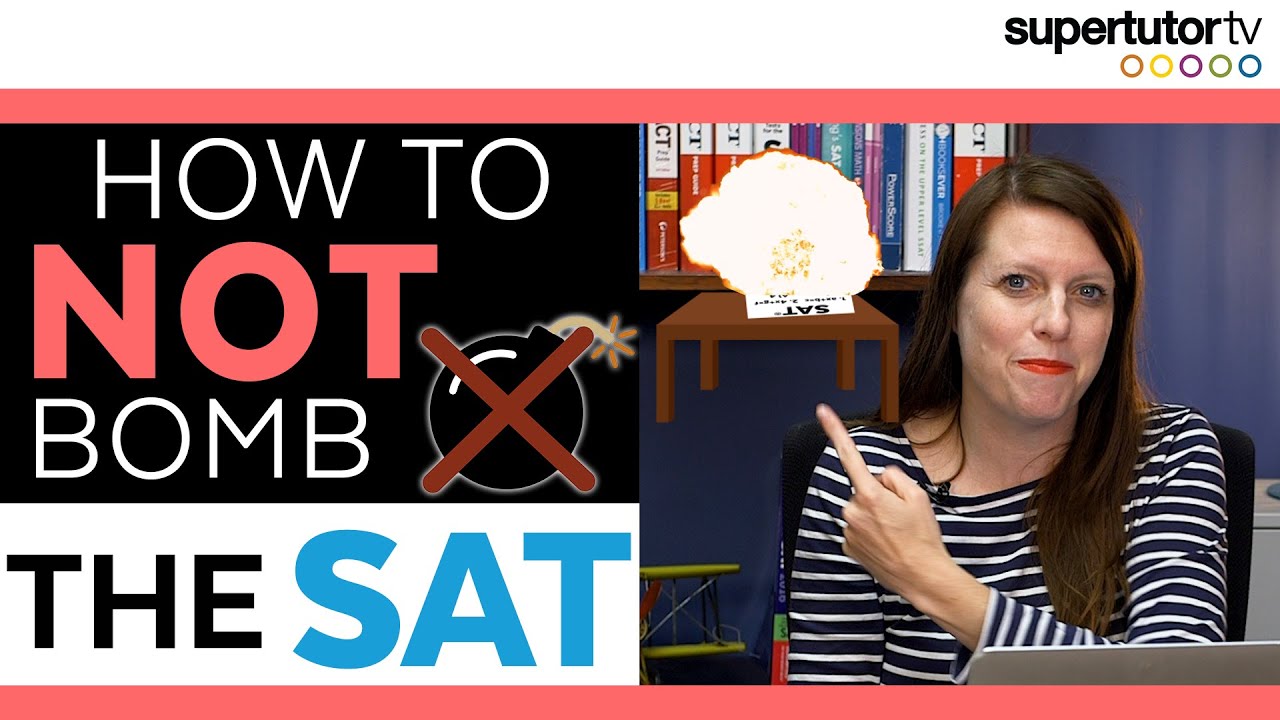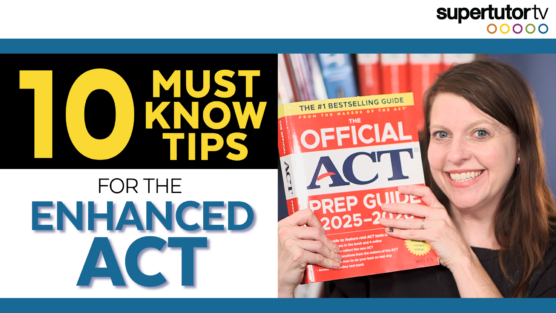Have you ever heard stories of how students were scoring so well on their practice tests and then completely bombed the SAT? In this blog, we’re going to break it down for you and let you know how to avoid that crash and burn.
The first thing that people do is that they screw up their pacing. And here’s what pacing comes down to: you aim for perfection. That means that you feel like you have to be perfect-perfect and this test feels so important that suddenly you’re spending a little bit more time on all of these questions because it feels like game day. And then when you dwell too long on them, you realize that your pacing is off, and you start to feel rushed. When you start to feel rushed, you start to substitute methods of approaching the test that are not what you learned.
For example, Brooke teaches students things like isolating answer choices, finding differences between answer choices, plugging in, and vocab and context. And when you don’t have time to do those (or you think that you don’t have time), you toss all of those methods out and start scrounging by with really bad methodology that uses gut reactions or fast thinking, and it ends up turning into a disaster. You cannot fast-think the SAT, by the way.
So let’s talk about how to fix this. Don’t aim for perfect-perfect. One of the things that Brooke has her students do is tell themselves what their goal is before they walk in on test day, and their goal is not to get a perfect score (even if they want to). Brooke tells them to aim for a 1550 or 1570, and what she does is have them strategically figure out how many questions they can miss on, for example, the reading section. If you need a 1550, then maybe that means you can miss 4 on the reading and 1 on the writing. Then, plan to get three—or five, or however many questions you figured out before—wrong. So when you get to a really tough question in the reading section, you can think of it as one of the questions you can choose to miss. You can then let it go and not worry about it too much, which allows you to keep moving. And as you keep moving, you’re going to feel more in control of the situation, which doesn’t let the panic set in. Therefore, you won’t have the whole cascade of horrible events due to rushing and you won’t abandon the tips and strategies that you know.
The other thing that Brooke likes to do is to finish first and deal with messy questions later. So again, keeping in mind the strategy of not getting to the end in a panicked state, let things go as you go, even if you’re not planning to miss them. Plan to deal with them later; this is especially helpful with the math section. If you find a really hard question in the no-calc section, don’t stay put; keep moving instead. When you get all the way to the end, you can come back to it.
Similarly, always try to do shortcuts on the math section first, and then try to do it the “right way” or the “double-check” way second. For example, you might have a question where you can see that the answer choices are ordered pairs and all of the x’s are the same. You can just solve for y and not plug back in and find the x. Even though you find both when doing math in school, you can shortcut it here. Looking down at the answer choices is one fast way to do that.
The next thing is to do reading passages in an optimized order. For Brooke, that means pushing the history passages towards the end because she tends to spend too much time on the history. To avoid trying to be perfect-perfect and spending forever rereading, save the passages you find difficult for the end. Brooke also never does the chart/graph or science questions last, because science usually takes focus and calmness to line up all the details. It’s not hard, but if she’s in a state of panic, it’s easy for her to fall apart on science. But this is all for Brooke personally, so you have to figure out what works for you. Think about finding an order where you put the passages that you can do best on when you’re panicked last and put the passages that you’ll do worst on when you’re panicked at the beginning. Strategizing that order can help you mitigate the bombing scenario.
Next, know where to go when time is short. If you do get to a passage late and you’re really running out of time to the point where you have ten questions left but only two minutes, figure out what questions to start with. Vocab and context are always the easiest to do without reading anything at all. Second, evidence questions can take the most time because you have to look up so much detail, so if you haven’t read, they can be super time-consuming and it’s a good idea to just skip them. And three, in the math sections, avoid lengthy word problems. If you see a type of question that’s a big word problem that you know is going to take forever, skip it, finish the test, and come back to it.
The last two tips we have are: one, bring your own watch—don’t go by the clock on the wall—and finally, write down markers and pacing points.
The second reason that people totally bomb the SAT is that they’re not as prepared as they think. Brooke once read a statistic that said American students are more confident in mathematics than students in any other country in the world, but their test scores in math are not nearly the highest in the world.
So, overconfidence is real. Just because you aced one practice test doesn’t mean you’ve covered 100% of the test content.
A few things to note on the SAT: first, geometry only occurs a little bit on each test, but it’s a really broad subject matter. What that means is that when that geometry question shows up, it could be something that has never shown up on a practice test, and you could end up blindsided. You end up taking too long on it, even though you know how to do it, because it’s been a while, and you end up crashing and burning into that pit of destruction.
Grammar rules are the same thing because some of these rules only show up once every ten tests. A lot of people don’t know every single way to use things like the super comma, semi-colons, comparisons, commas, dashes, and colons.
The final thing is that reading passages can really vary. Some of you guys might be able to do really well if your practice tests have modern passages, but when it comes to a really tough history passage, maybe you fall apart.
So, what’s the remedy for this?
First, make sure that you’re versed in all the sections and all the rules. Brooke always says that real practice tests are the best way to practice, but if you really want your best score possible, you might also want to get other resources like books, courses, or tutoring. Learn every grammar rule; make sure you are proficient and polished in every type of math problem; and try not to finish your practice tests barely on time, because adding a little stress can push you over on time.
The third reason that students bomb the SAT is that they panic. Test anxiety is super real, so we’ll go over a few test anxiety tips for you guys.
Number one, plan to take the test multiple times. It helps take some of the pressure off, because this isn’t the only test that you’re going to take and you’ll have multiple chances to get a great score. Two, understand that test-optional is an option. There are lots of colleges you can get into without a test score, and it’s not the end of the world if you bomb. Just knowing that will hopefully help you relax. And three, take the ACT for fun. If you’re studying for the SAT, we sometimes recommend that students also prepare for the ACT.
Brooke had a student that emailed her and said that he only did the online SAT course, and he managed to score not only in the 99th percentile on the SAT but a 35 on the ACT. Sometimes you can walk in, just take the test as an extra lottery ticket, not care about it at all, and because you’re relaxed, you can get rid of that test anxiety.
That’s all we have for you today, but we hope that you find this insightful and helpful!





